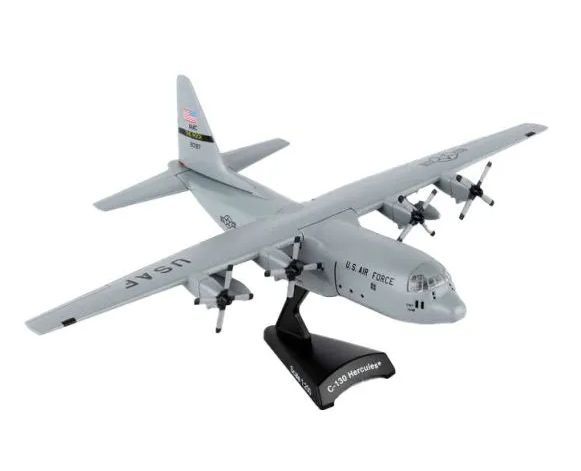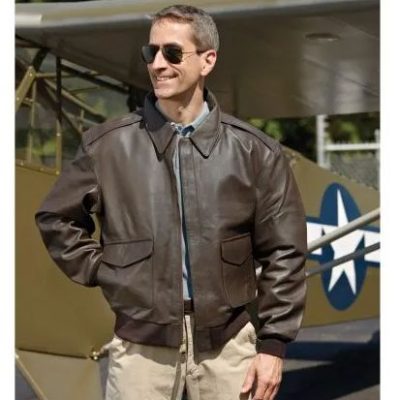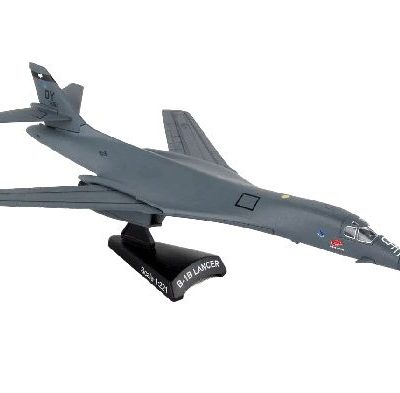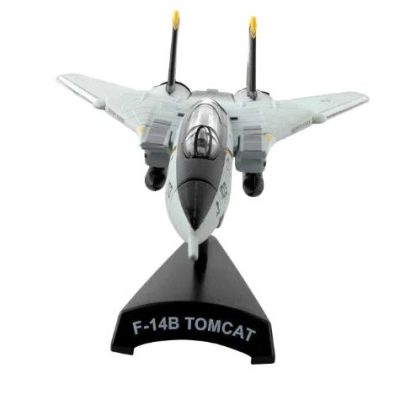Description
C-130 Hercules Die-Cast Model
Type of Aircraft: Transport/Cargo/Hurricane Reconnaissance or Hurricane Hunter for NOAA by the USAF
Nation of Origin: USA
Period: Operation Vietnam still in service in many countries.
Produced: From: 1954 to Present
Role: Humanitarian operations, search and rescue, scientific research support, weather reconnaissance, aerial refueling, maritime patrol, and aerial firefighting, Gunship (AC-130), for airborne assault,. It is now the main tactical airlifter for many military forces worldwide.
Manufacturer: Lockheed Martin Company
Historical Data of Aircraft:
From Wikipedia, the free encyclopedia
The Lockheed C-130 Hercules is an American four-engine turboprop military transport aircraft designed and built by Lockheed (now Lockheed Martin). Capable of using unprepared runways for takeoffs and landings, the C-130 was originally designed as a troop, medevac, and cargo transport aircraft. The versatile airframe has found uses in other roles, including as a gunship (AC-130), for airborne assault, search and rescue, scientific research support, weather reconnaissance, aerial refueling, maritime patrol, and aerial firefighting. It is now the main tactical airlifter for many military forces worldwide. More than 40 variants of the Hercules, including civilian versions marketed as the Lockheed L-100, operate in more than 60 nations.
The C-130 entered service with the U.S. in 1956, followed by Australia and many other nations. During its years of service, the Hercules has participated in numerous military, civilian and humanitarian aid operations. In 2007, the transport became the fifth aircraft to mark 50 years of continuous service with its original primary customer, which for the C-130 is the United States Air Force. The C-130 is the longest continuously produced military aircraft at more than 60 years, with the updated Lockheed Martin C-130J Super Hercules being produced as of 2023.
The Korean War showed that World War II-era piston-engine transports—Fairchild C-119 Flying Boxcars, Douglas C-47 Skytrains and Curtiss C-46 Commandos—were no longer adequate. On 2 February 1951, the United States Air Force issued a General Operating Requirement (GOR) for a new transport to Boeing, Douglas, Fairchild, Lockheed, Martin, Chase Aircraft, North American, Northrop, and Airlifts Inc.
The new transport would have a capacity of 92 passengers, 72 combat troops or 64 paratroopers in a cargo compartment that was approximately 41 ft (12 m) long, 9 ft (2.7 m) high, and 10 ft (3.0 m) wide. Unlike transports derived from passenger airliners, it was to be designed specifically as a combat transport with loading from a hinged loading ramp at the rear of the fuselage. A notable advance for large aircraft was the introduction of a turboprop powerplant, the Allison T56 which was developed for the C-130. It gave the aircraft greater range than a turbojet engine as it used less fuel. Turboprop engines also produced much more power for their weight than piston engines. However, the turboprop configuration chosen for the T56, with the propeller connected to the compressor, had the potential to cause structural failure of the aircraft if an engine failed. Safety devices had to be incorporated to reduce the excessive drag from a windmilling propeller.
The main reason that the C-17 Globalmaster replaced the C-130 to enable the U.S. Military to airlift a Abrams Tank to forward bases.





